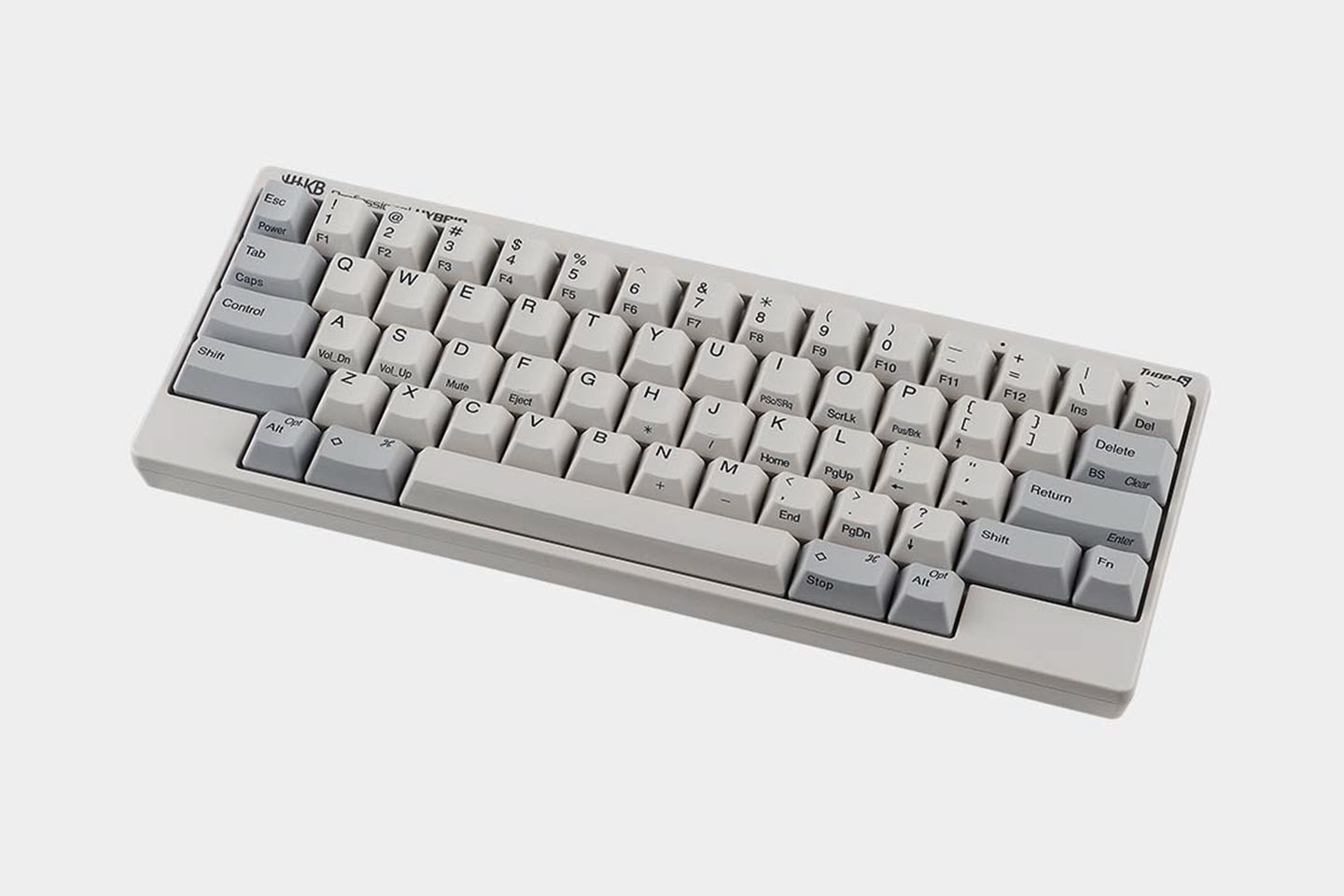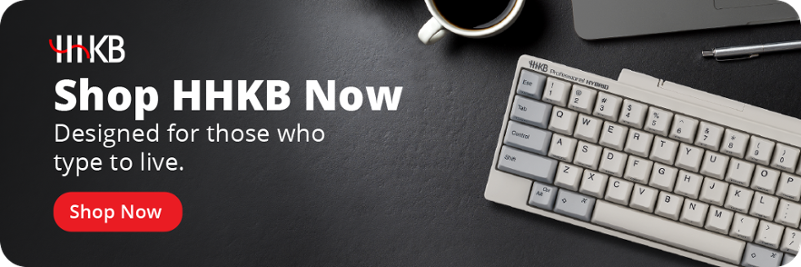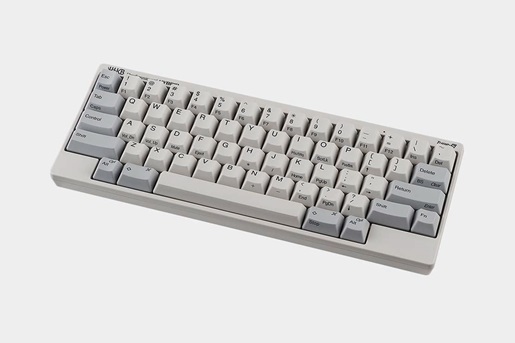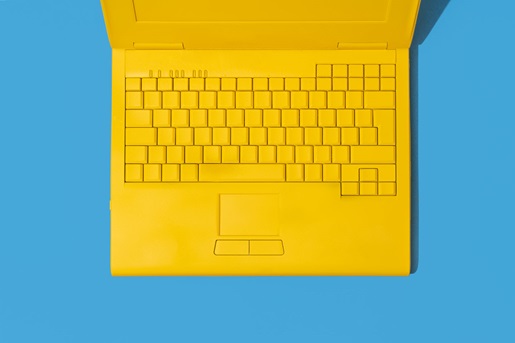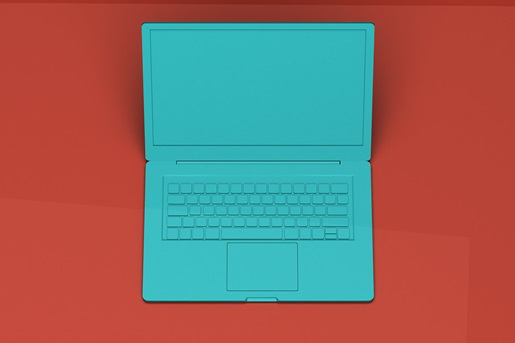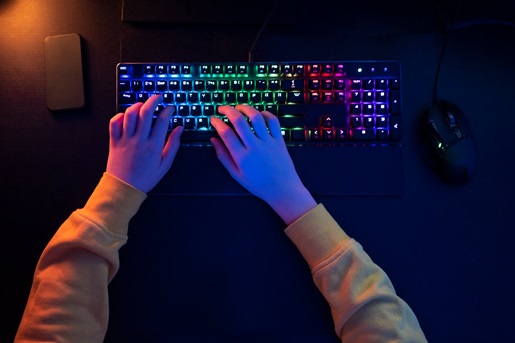Here’s how the HHKB layout makes for a better typing experience that’s still easy to learn
Two historical machines had the arguably biggest impact on keyboard layouts as we know them today: the typewriter and the IBM terminal. But unless you’re recording telegraph messages or are keying in Apollo launch programs, the way you use a keyboard has likely changed quite a bit from the days of those early influences. Alternative keyboard layouts create workflows more conducive to modern typing needs by adding, subtracting, and altering key positions; one of the most practical yet easy-to-learn of these alternatives is the HHKB layout.
This article will introduce you to the differences that set the HHKB keyboard layout apart from others, as well as the similarities that make it one of the easiest layouts to pick up and run with even for seasoned touch typists. It will also introduce how the HHKB layout’s origins began three decades ago, and the way to get the best HHKB typing experience today.
What are the defining characteristics of the HHKB layout?
If you’re coming from a standard full-size keyboard, the first thing you’re likely to notice about the HHKB key layout is how much more compact it is. HHKB keyboards feature only 60 keys (making them a stalwart representative of the 60% keyboard size) but still feature standard-sized keycaps, meaning they feel just as comfortable to type on while taking up significantly less space on your desk.
You’ll also notice that HHKB layout keyboards relocate several keys from their standard positions. While they may seem odd at first glance, each was made for minimal finger movement for maximum typing efficiency:
- Control: Despite occupying a large spot on the keyboard immediately adjacent to the home keys, Caps Lock is seldom used by modern typists. Meanwhile, the Control key is used regularly for numerous time-saving shortcuts across programs and operating systems despite being relegated to the lower left corner. To save typists time and finger strain, the HHKB layout moves Control to Caps Lock’s former location, and places Caps Lock on the function layer for Tab — more on how HHKB uses the function layer in a bit.
- Delete/backspace: With the same goal of saving typists time and effort by bringing commonly used keys closer to the home keys, HHKB layout keyboards drop the Backspace/Delete key down one row to the spot formerly occupied by the less frequently used Backslash key. The Backslash key moves up to near the top right corner of the board.
- Escape: Like many other 60% keyboards, the HHKB key layout relocates the Escape key to the top left corner of the main cluster — a spot formerly occupied by the Backtick/Tilde key. But unlike other 60% keyboards, Backtick/Tilde retains a dedicated spot, now at the top right corner of the layout (adjacent to the new Backslash location).
- Simplified bottom row: With the left Control key relocated, the HHKB layout minimizes uncomfortable pinky stretching with a simplified bottom row: just two alt keys, the spacebar, and the henkan and muhenkan (also called left and right diamond) keys, which can be easily customized to function as the Windows key, Command key, and beyond.
A dedicated Function key to the right of Right Shift provides access to the aforementioned Caps Lock as well as many other keys, letting HHKB layout keyboards retain the practical usage of larger boards with better ergonomics and significantly smaller space requirements. For instance, the convenient placement of the Function key means you can use the arrow keys with minimal movement away from the home row — simply hold Function with your right pinky, then use your right index and middle fingers to quickly navigate through documents, menus, and more. These changes foster more ergonomic and efficient usage while allowing for an easier transition than layouts that revise the positions of letter keys, such as Dvorak and Workman.
Did You Know?: HHKB keyboards feature Topre switches, which are a favorite among enthusiasts for their precise and satisfying feel.
What is the HHKB layout’s history?
The history of HHKB begins in 1992 with an article penned by Dr. Eiiti Wada, a computer scientist at the University of Tokyo. In the article titled “Please Pay Attention to the Keyboard Layout,” Dr. Wada laid out the need for a keyboard that had only the keys necessary to make the best keyboard layout for programming. This new layout of 60 keys would offer a more ergonomic design for coders — then and now one of the most demanding professions for daily typing — while also reducing the amount of space a keyboard took up on a desk.
Dr. Wata also argued for the creation of keyboards that power users would want to retain from one computer to the next, rather than treating them like afterthought accessories. He likened this to cowboys keeping the same saddles even when they went from one horse to the next, since it was a well-made piece of equipment that let them do their job in a way they were comfortable with.
Dr. Wata would later work with the PFU engineering team to bring this keyboard concept into reality. The first Happy Hacking Keyboard debuted in Japan in 1996 and quickly became a favorite among computer workers and enthusiasts around the world. Successive versions introduced further beloved features such as Topre key switches and Bluetooth wireless support.
Did You Know?:You can learn more about the mystery of the Control key and how the HHKB layout came to be in our in-depth look at the HHKB brand.
The best way to start your HHKB layout typing journey
More than three decades after Dr. Wada put his vision for a better keyboard layout to paper, the latest generation of HHKB keyboard presents that same intelligently revised typing experience paired with modern advancements and refinements.
The HHKB Professional Hybrid line offers a premium typing experience you’ll want to keep typing on for years to come, with options for silent typists as well as those who love the resonant “thock” of an unmuted Topre switch. The new Snow collectionnew Snow collection even lets you enjoy it all in a sophisticated, powder-white design that bridges modernity with tradition. Check out the full range of high-end keyboards from HHKB to find out for yourself why the HHKB layout remains a favorite among those who type to live.

